How shifts in customer text message behavior are changing SMS marketing
The way we use our phones has changed over the last year.
A lot.
Part of this shift is due to the way COVID-19 changed how we work. We can’t pop by a coworker’s desk like we used to, so we’re texting them instead—48% of millennials who are texting more in the last 12 months say they are texting their coworkers and managers more.
Another reason for the change in our handheld habits? The brands we know and love are getting more sophisticated than ever with their SMS campaigns. We found that Americans are more likely to ignore texts from friends and family than texts from the brands they care about.
Whether it’s a cultural transformation or a technological one, ecommerce stores will need to adjust their marketing strategies to align with this rising trend.
Kady Srinivasan, Klaviyo’s SVP of marketing, agrees.
“One of the big lessons the pandemic taught people is how simple your life can be—people don’t necessarily need as many things in their everyday lives anymore. They want things to be simple. They want brand interactions to feel authentic according to their experiences,” she said.
We recently conducted a survey to gauge American consumers’ opinions on texting in the COVID era. We discovered some fascinating behaviors surrounding how we’re texting one another in our personal and professional lives, when and why brands should be texting their customers, and how it’s done right.
People are paying more attention to text messages from brands
Americans are more likely to ignore texts from friends and family than from brands.

Yet, when it comes to friends and family texts, Americans are more likely to feel happy when friends text them (58%) in comparison to family members, including siblings (43%), mom (38%), and dad (29%).
Half of Americans (51%) say they’ve texted more in the past 12 months compared to other methods of communication like phone calls (42%), email (42%), Facetime/video calls (41%), and social media messaging.
Phones are socialization essentials
Can you survive without your phone? Almost half of us say “no.” While our devices do help us feel more connected, has that connection become a codependence?

Why brands need to start the SMS conversation
Even if you haven’t received a text from a brand recently, chances are you have at some point. SMS communication from brands is increasingly common.
85% of Americans say they’ve been texted by a brand recently. Of those, 65% say they usually feel secure interacting with them via SMS.

Americans want brands to text them
23% of Americans who prefer to receive brand communications through text or email only want to receive these messages through SMS.

- 21% of men prefer to be called by brands compared to 12% of women.
- 22% of Americans said a text from a brand made their day during the last year.
What’s in it for me?
Coupons or promotion codes (51%), loyalty offers and benefits (40%), notifications about upcoming sales/promotions (39%), and birthday deals (34%) are the kinds of texts that make Americans want to interact with brands the most.
Finding the frequency sweet spot.
28% of Americans who have received a text from a brand say they are delivered almost daily. Yet only 15% say that it’s acceptable for their favorite brand to text them once a day, while “once a week” is the most popular option (31%). Only one in five (19%) customers say that they don’t want to be texted at all by their favorite brand.
Kady weighed in. “Trigger messages and experiences based on intention and timing. If someone has shown a high intent to buy because they’ve looked at a product page more than once, send an SMS message to entice them to purchase. Figure out what works for people based on where they are in the buyer’s journey and meet them there,” she advised.
Has text replaced email?
Not yet. But we are texting our coworkers more than we did a year ago. Americans are more likely to text their coworkers (43%), managers (41%), and clients (34%) compared to a year ago.
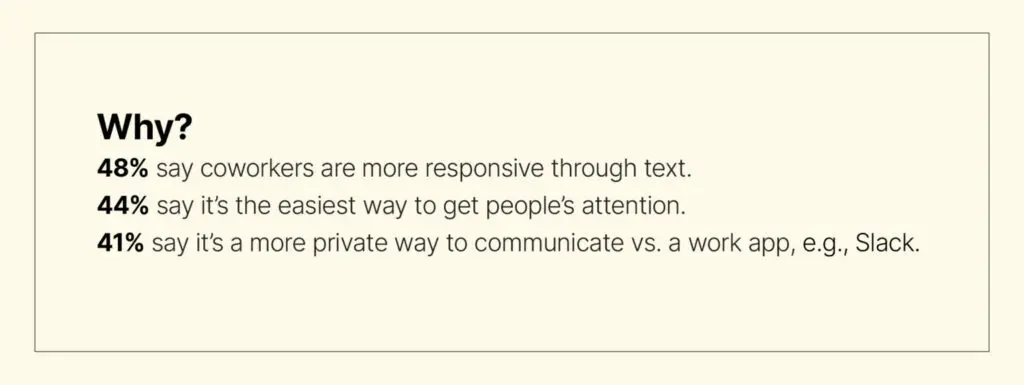
46% of men and 34% of women are more likely to text their coworkers now than compared to a year ago, citing it as a more private way to communicate than workplace apps.

61% of women say they typically text their coworkers instead of other communication methods, compared to 49% of men.
59% of Gen Zers and 57% of Gen Xers say they typically text their coworkers over other communication methods, compared to 53% of baby boomers and 50% of millennials.
Overall, 36% of Americans who have increased texting in the last year are using it to message their bosses and colleagues more.
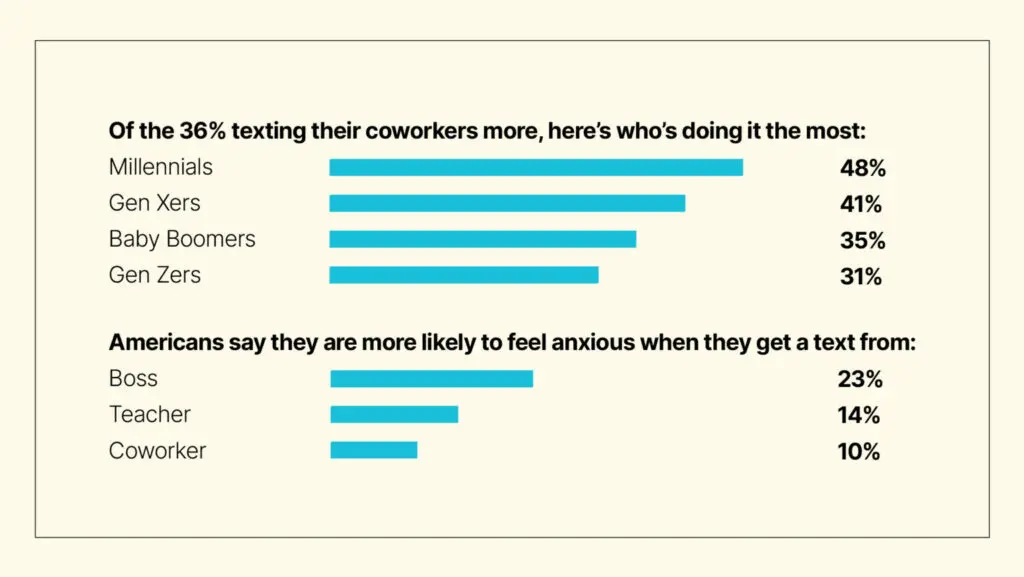
Only 8% said that they’re likely to feel happiness when their boss texts them.
Text messaging is king
Across every generation, text messaging ranks number one as the most important communication platform on cell phones (32%). And over half (59%) of Americans say that their phone has been their lifeline during the pandemic.
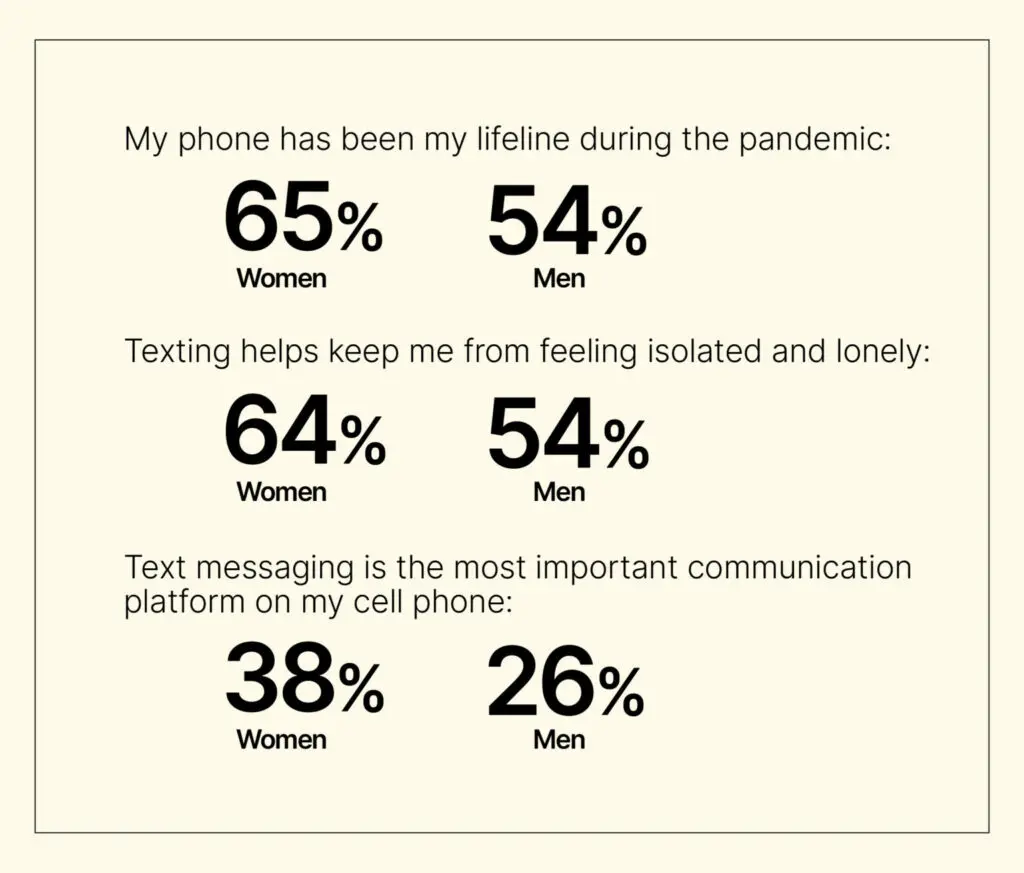

Unread emails and texts are increasing
- 1,602: Number of unread emails the average American has in their personal inbox. Only 32% of Americans can say they have an inbox with zero unread messages.
- 47: Number of unread text messages the average American has on their phone. 43% of Americans have unread texts on their phone.
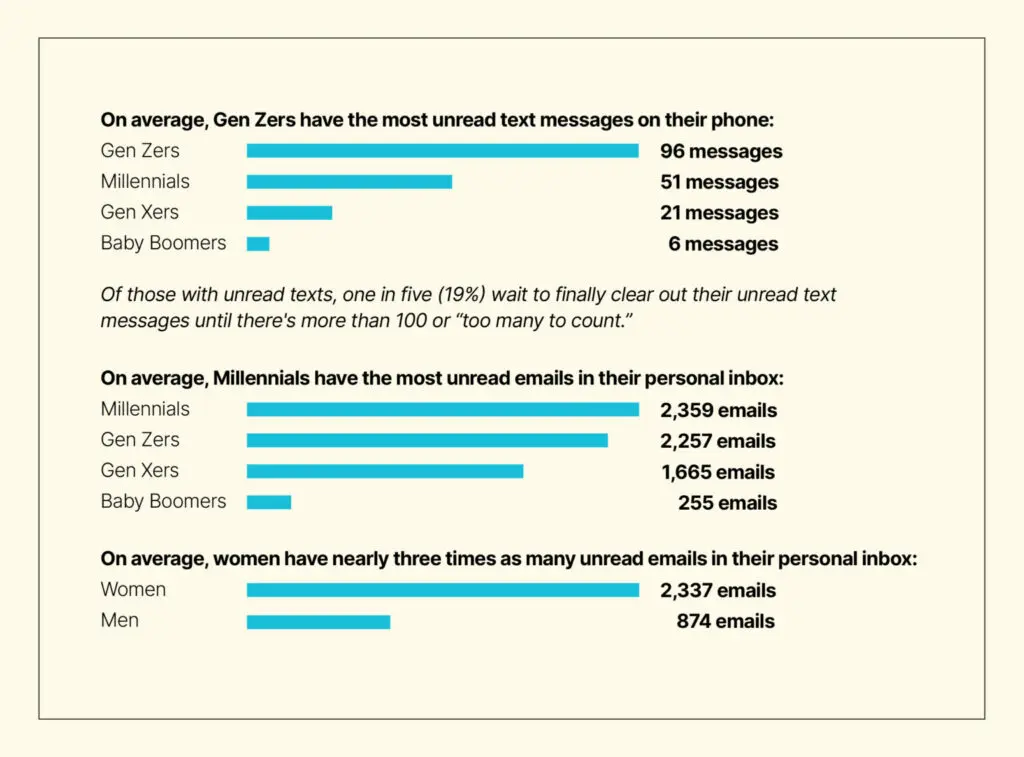
Phones are becoming more precious
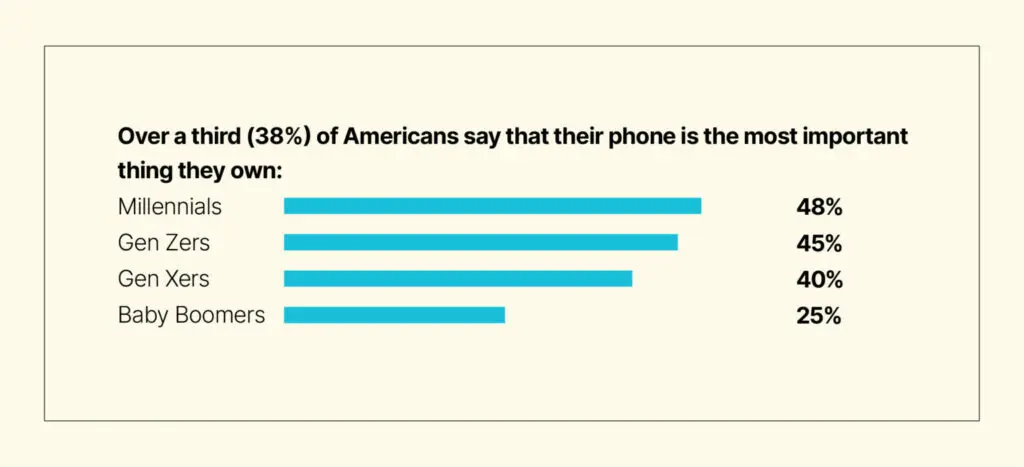
Getting into your customer’s DMs–and staying there–is just like any conversation. Cultivating a relationship via SMS is a matter of timing and relevance.
Customers don’t want to be overwhelmed with messages, especially since texting apps don’t have the same spam filters email apps do. It’s easier to just unsubscribe altogether. A sensible cadence is all it takes to keep the conversation going, but make sure that when a customer does engage, your response is swift.
As far as the contents of your customer texts go, offers and incentives are always welcome. Birthdays and holidays are great times to reach out, as well as product launches and new offerings. Just make sure that messages are customer-first, not pushy or self-serving.
Here are five tips to help you get started with text message marketing:
1. Create a unique experience on SMS.
When subscribers sign up to your SMS list, reward them with something special (something they won’t get through email). Let them shop a new product launch an hour early or get VIP access to an upcoming sale.
2. Use texts to send more personal messages that’ll deepen your customer relationships.
Send your SMS subscribers a birthday text or a happy anniversary message – any celebratory milestone that’s related to your industry (and your audience).
3. Use SMS as a channel to communicate time-sensitive or valuable content.
If you’re running a flash sale on Black Friday and Cyber Monday weekend, notify your subscribers via text. It’s a more immediate channel and you’ll have a greater chance of your subscribers actually seeing your message.
4. Use customer behaviors to determine when and what messages to send.
If someone on your list didn’t open your promotional email within 12 hours, try sending a follow-up text to get them to engage with your message. But if they opened your email, forgo the text to avoid bombarding your audience with duplicative content.
5. If you’re using two-way SMS, make sure you have enough staff to handle the volume of incoming texts.
Your customers don’t want to wait hours for a response from your brand. ƒDelayed responses correlate to a poor customer experience.
It remains to be seen whether we’ll use our phones less once the pandemic is officially over. For now, smart marketers are spending their dollars where consumers are spending their time.
Want to learn more about if SMS is right for you? Check out these five reasons why every business should invest in text message marketing.

Related content

Looking for the best SMS marketing tools? See the top 3 platforms for 2026 and learn how to choose the right one for segmentation, automation, and two-way messaging

Marketers are right to be cautious right now. The Texas settlement has sparked more questions than clarity—but that’s exactly why taking a compliance-first approach still matters.
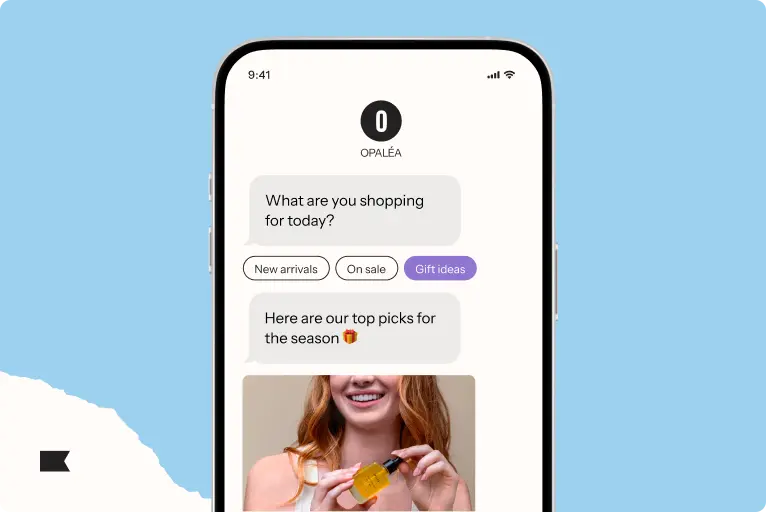
Google’s RCS Roadshow and Klaviyo are shaping the future of mobile marketing with AI-powered personalization and trusted, interactive messaging.